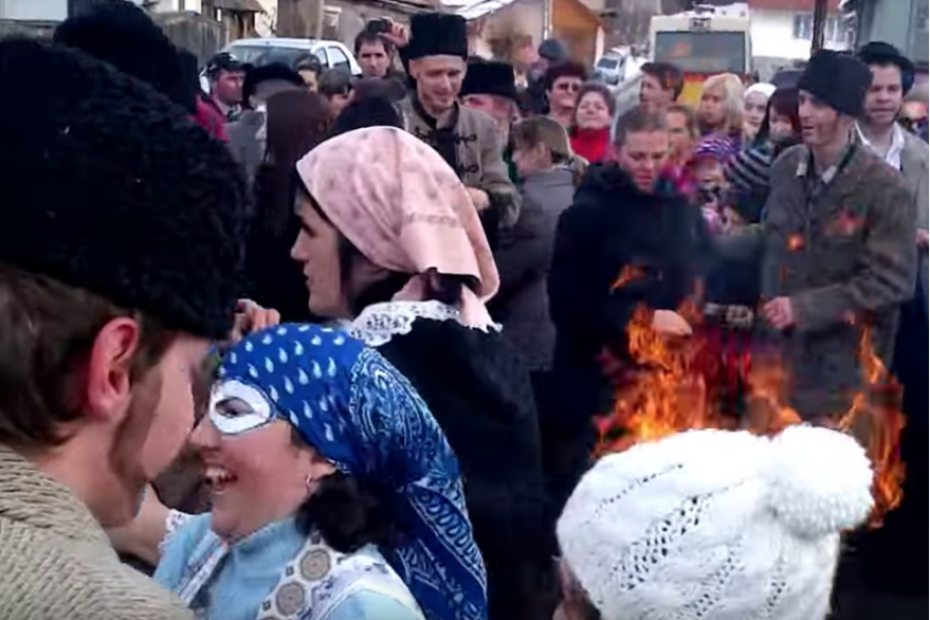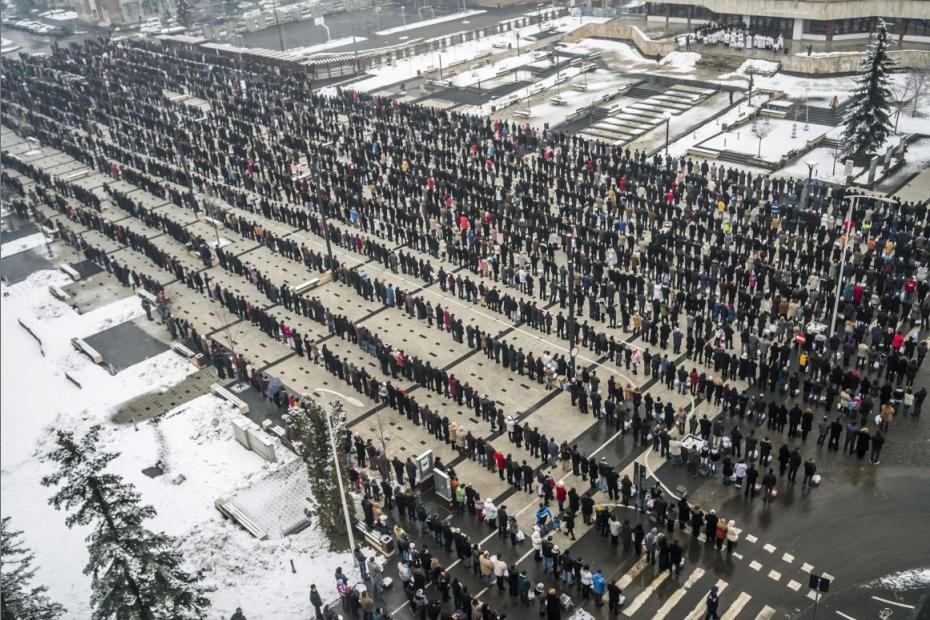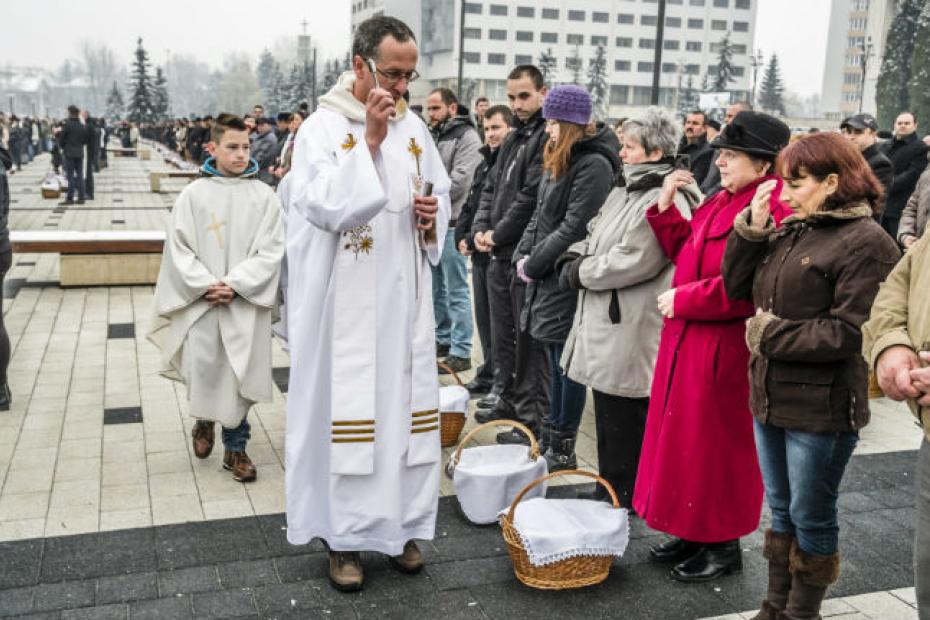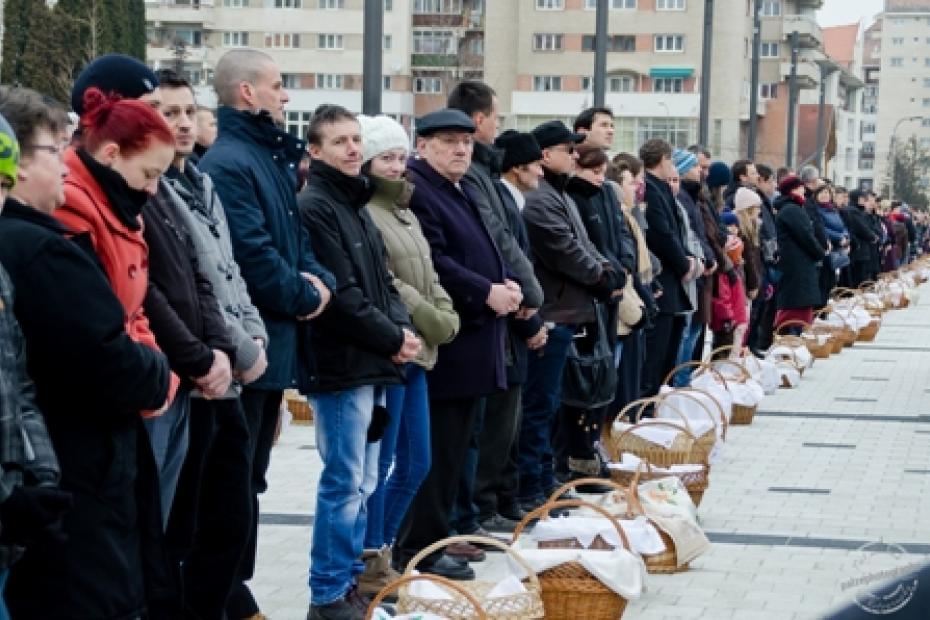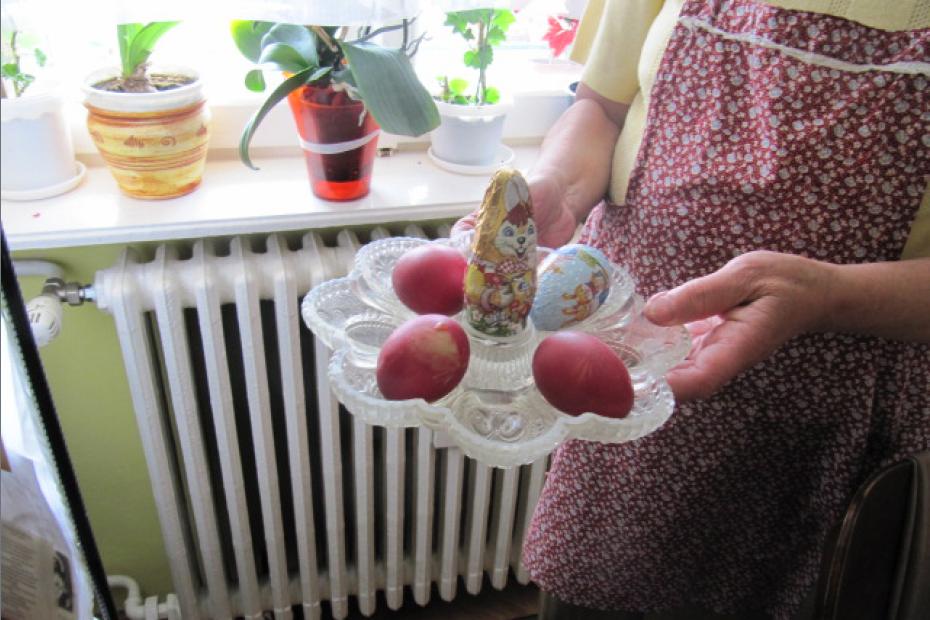A carnival-type festival called “The Carnival Burial” (Farsang temetés) takes place each year just before the beginning of Lent. Early in the morning, participants from villages across the valley will go by bus or car to a nearby village. In the Ciuc Valley, a Catholic and ethnic Hungarian enclave in Transylvania, each year a different village hosts this festival and organizes the festivities for visiting groups. Village groups will walk around the village and stop in front of houses that have prepared a table of sweets and liquor. The processions are loud and raucous; each group is led by a brass band, fiddlers, and drums loudly announcing the approaching revelers. There is a general air of freedom and gender-based role-reversal. Participants dress up in costumes, portraying Catholic Cardinals and priests, shepherds, goats, ghosts, monsters, and witches. The ghosts and monsters — usually young men — will rush out into traffic and stop oncoming cars, dancing around them to the amusement of onlookers. The drivers will oblige the festival-goers with donations or simply a handshake. Men often dress as women, and a few women will put on men’s clothing, too.
The “burial” refers to a man made of straw with arms and legs, often named “Isaiah,” whose passing the group laments at each station. Isaiah is draped over a wagon and dragged from station to station. Heightening the feeling of overt sexuality, Isaiah wears a carrot and two potatoes on the outside of his pants. When the group stops before a house with a table of sweets and liquor waiting in front, the group stands around this figure and loudly laments Isaiah’s passing. Women take turns stepping forward to kneel beside Isaiah while pronouncing over-exaggerated laments. The laments are often ribald or insulting, making fun of Isaiah’s foibles or character flaws. After this overt revelation of internal family conflicts that plague women’s lives, the groups reaffirm the gendered status quo: they pair up, women and men, and do a few rounds of a traditional dance. At the final stop, they light fire to the straw and sing dirge-like hymns while Isaiah burns.
Many families will bring “Easter baskets” of food and drink to their parish priest for a blessing. In big cities, churches buildings can’t hold all the people who come for this blessing, so the main town square is taken over with lines of people standing behind their Easter basket. Unlike other rituals, such as first communion or baptism, individuals and families need not prepare extensively in order to participate in this ritual. Preparing food is already an important part of Easter; Catholic families serve an elaborate meal on the evening of Easter Sunday. It is one of the most popular rituals because it is an easy way to ask for a blessing for one of the most important aspects of everyday life: cooking and eating food.
Coloring and decorating eggs is also a popular Easter time tradition, practiced in both rural and urban settings. Catholics draw designs with wax on hard-boiled eggs and then dye them a shade of red. The eggs are then displayed in the kitchen or living room.
At Easter time, it is commonplace for groups of young men to go visiting women in their neighborhood in a tradition called, "watering" or "locsolás." The groups of young men will knock on the door and ask to speak with the women in the home. Once the women have arrived, the young men will "water" them by sprinkling them with water or perfume. In return, they will receive a small amount of money before moving on to the next house.
